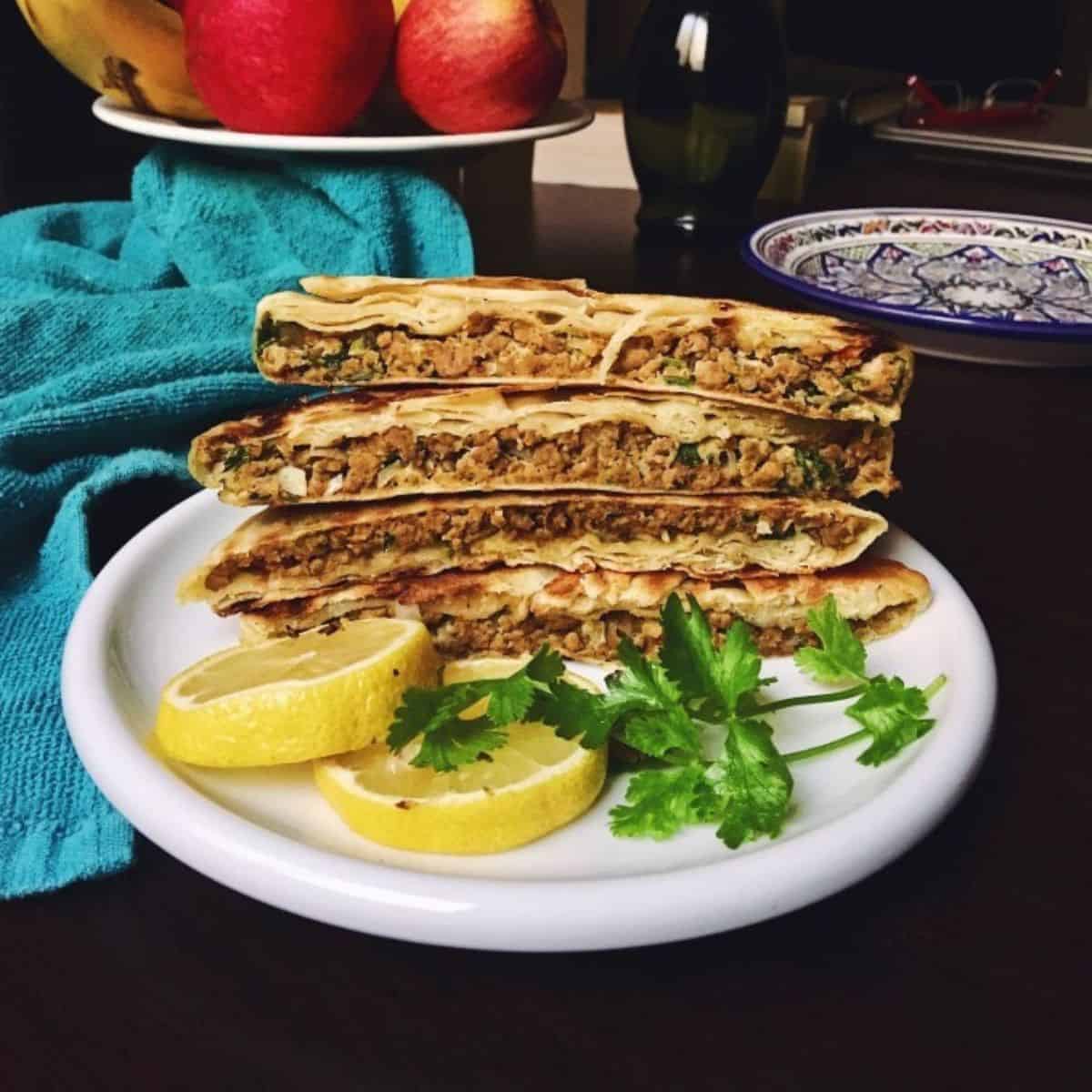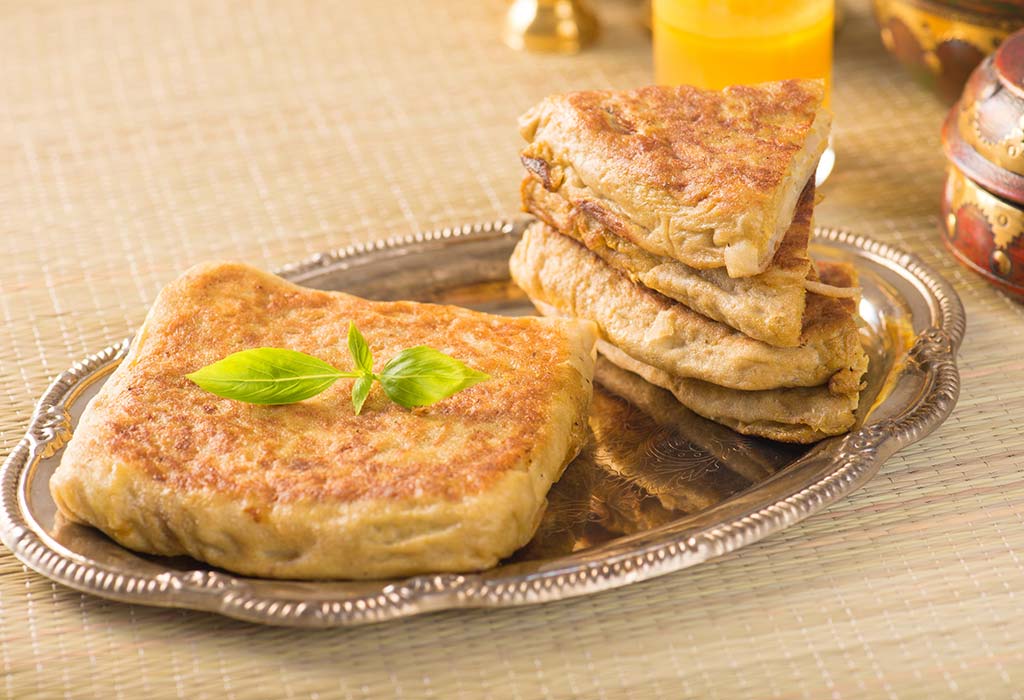Mutabbaq, a culinary masterpiece from the Levant, is a delectable dish that has tantalized taste buds for centuries. Its origins can be traced back to the ancient kitchens of the Middle East, where it was revered for its exquisite blend of flavors and textures.
Today, mutabbaq continues to enchant food enthusiasts worldwide, offering a taste of tradition and a feast for the senses.
In this comprehensive guide, we will delve into the intricacies of the mutabbaq recipe, exploring its ingredients, cooking methods, and cultural significance. We will also provide helpful tips and tricks to elevate your mutabbaq-making skills and uncover its potential health benefits.
Join us on this culinary adventure as we uncover the secrets of this beloved dish.
Ingredients
To create a delectable mutabbaq, you’ll need a combination of essential ingredients. Let’s delve into the specifics:
The foundation of your mutabbaq lies in the flour. All-purpose flour, with its versatile nature, serves as the perfect base for this dish. Alternatively, you can opt for a blend of all-purpose and whole-wheat flour for a touch of added texture and nutritional value.
Filling Options
The heart of your mutabbaq lies in the filling. Here are some popular options to consider:
- Cheese: Mozzarella, cheddar, or a blend of your favorites will create a gooey, irresistible filling.
- Vegetables: Sautéed spinach, onions, or bell peppers add a vibrant and flavorful touch.
- Meat: Ground beef or chicken, seasoned to your liking, provides a savory and satisfying filling.
Additional Ingredients
Beyond the basics, a few additional ingredients enhance the flavor and texture of your mutabbaq:
- Oil: Olive oil or vegetable oil is essential for greasing the pan and preventing sticking.
- Spices: A sprinkle of salt and pepper adds a touch of classic seasoning, while herbs like oregano or basil provide a more aromatic touch.
- Egg: Beaten egg is used to brush the surface of the mutabbaq, giving it a golden-brown finish.
Step-by-Step s
Preparing the Dough
- Gather the flour, water, salt, and oil.
- In a large bowl, combine the flour, salt, and oil.
- Gradually add water and mix until a dough forms.
- Knead the dough for 5-7 minutes until it becomes smooth and elastic.
- Cover the dough with plastic wrap and let it rest for at least 30 minutes.
Making the Filling
- Gather the meat, onions, spices, and seasonings.
- In a skillet, brown the meat over medium heat.
- Add the onions and cook until softened.
- Stir in the spices and seasonings.
- Remove the skillet from heat and let the filling cool slightly.
Assembling the Mutabbaq
- Divide the dough into small balls.
- Roll out each ball into a thin circle.
- Place a spoonful of filling in the center of each circle.
- Fold the edges of the dough over the filling to form a triangle.
- Crimp the edges to seal.
Cooking the Mutabbaq
- Heat a griddle or skillet over medium heat.
- Grease the griddle or skillet with oil.
- Cook the mutabbaq for 2-3 minutes per side, or until golden brown and crispy.
- Serve hot with your favorite dipping sauce.
Cooking Methods
The mutabbaq recipe can be prepared using various cooking methods, each offering unique advantages and disadvantages. Understanding the different methods allows you to choose the one that best suits your preferences and cooking environment.
The primary cooking methods for mutabbaq are:
- Grilling: Grilling involves cooking the mutabbaq over direct heat, typically on a grill or griddle. This method imparts a smoky flavor and characteristic grill marks. It is recommended for those who prefer a slightly crispy exterior and juicy interior.
- Pan-frying: Pan-frying involves cooking the mutabbaq in a skillet with a small amount of oil. This method allows for precise control over the heat and cooking time, resulting in an evenly cooked mutabbaq with a slightly crispy exterior. It is suitable for those who prefer a less smoky flavor.
- Baking: Baking involves cooking the mutabbaq in an oven. This method provides even cooking throughout and is ideal for those who prefer a tender and juicy mutabbaq. However, it may not produce the same level of crispiness as grilling or pan-frying.
Serving Suggestions
Mutabbaq can be enjoyed as both an appetizer or a main course. As an appetizer, it is often served with a variety of dips such as hummus, baba ghanoush, or labneh. As a main course, it can be paired with rice, bulgur, or grilled vegetables.
Traditional Accompaniments
- Hummus: A dip made from chickpeas, tahini, lemon juice, and garlic.
- Baba ghanoush: A dip made from roasted eggplant, tahini, lemon juice, and garlic.
- Labneh: A strained yogurt that is thick and creamy.
- Rice: A staple food in the Middle East, often served with stews or grilled meats.
- Bulgur: A type of cracked wheat that is often used in pilafs and salads.
- Grilled vegetables: A healthy and flavorful side dish that pairs well with mutabbaq.
Creative Pairings
- Guacamole: A dip made from avocados, tomatoes, onions, and cilantro.
- Salsa: A sauce made from tomatoes, onions, peppers, and cilantro.
- Tzatziki: A dip made from yogurt, cucumbers, garlic, and olive oil.
- Pesto: A sauce made from basil, pine nuts, Parmesan cheese, and olive oil.
- Roasted red peppers: A flavorful and colorful side dish that adds a touch of sweetness to mutabbaq.
Cultural Significance
Mutabbaq holds a significant place in the culinary and cultural heritage of various regions.
Historically, mutabbaq originated in the Arabian Peninsula and spread throughout the Middle East and North Africa. Its versatility and affordability made it a staple dish in many households and a favorite street food.
Social Gatherings
Mutabbaq is often associated with social gatherings and celebrations. Its ease of preparation and communal sharing make it an ideal dish for family meals, picnics, and festive occasions.
In some cultures, mutabbaq is a symbol of hospitality and generosity. Serving it to guests is a way of showing appreciation and welcoming them into one’s home.
Variations and Adaptations
Mutabbaq is a versatile dish that lends itself well to various adaptations and variations. These variations can be found across different regions and cultures, each with its own unique take on the classic recipe.
The key differences between these variations often lie in the choice of fillings, seasonings, and cooking methods. While some variations remain faithful to the traditional recipe, others incorporate modern ingredients and techniques to create innovative twists.
Fillings
- Meat fillings: Ground beef, lamb, or chicken are common choices for meat fillings. They can be seasoned with various spices, such as cumin, coriander, and paprika.
- Vegetable fillings: Onions, tomatoes, peppers, and spinach are popular vegetable fillings. They can be sautéed or grilled before being added to the mutabbaq.
- Cheese fillings: Feta, mozzarella, or cheddar cheese can be added to the mutabbaq for a creamy and flavorful filling.
Seasonings
- Traditional seasonings: Cumin, coriander, paprika, and turmeric are essential spices used in the traditional mutabbaq recipe.
- Modern seasonings: Garlic powder, onion powder, and chili powder are modern seasonings that can be added to enhance the flavor profile.
Cooking Methods
- Pan-frying: The traditional method of cooking mutabbaq is to pan-fry it in a skillet with oil.
- Baking: Mutabbaq can also be baked in the oven, resulting in a crispy crust and a tender interior.
- Deep-frying: Deep-frying mutabbaq creates a golden-brown and crispy exterior.
Tips and Tricks

Mastering the art of Mutabbaq requires attention to detail and a few clever techniques. Here are some invaluable tips and tricks to elevate your Mutabbaq game:
Choosing the Right Ingredients
- Flour: Use high-quality all-purpose flour or a blend of all-purpose and bread flour for a perfect balance of texture and elasticity.
- Yeast: Fresh yeast is preferred, but active dry yeast will also suffice. Ensure it’s active before using by dissolving it in warm water with a pinch of sugar.
- Milk: Warm milk promotes yeast activation and adds richness to the dough. Use whole or 2% milk for best results.
Troubleshooting Common Issues
- Dough too sticky: Add a little more flour, 1 tablespoon at a time, until the dough becomes manageable.
- Dough too dry: Gradually add warm milk, 1 tablespoon at a time, until the dough is soft and pliable.
- Mutabbaq not rising: Check the yeast’s activity before using it. Ensure the dough is placed in a warm place for rising.
Enhancing Flavors
- Spices: Add a pinch of cumin, coriander, or paprika to the dough for an aromatic twist.
- Herbs: Fresh cilantro or parsley can be incorporated into the dough for a vibrant flavor.
- Cheese: Grated mozzarella or cheddar cheese can be sprinkled on top of the dough before rolling for a cheesy surprise.
Health Benefits
Consuming mutabbaq offers potential health benefits due to its nutrient-rich ingredients.
The dish provides essential vitamins, minerals, and antioxidants, contributing to overall well-being.
Nutritional Value
- Vitamin C: Found in tomatoes, essential for immune function and collagen production.
- Vitamin A: From carrots, supports vision, skin health, and immune response.
- Potassium: Rich in potatoes, helps regulate blood pressure and supports muscle function.
- Fiber: From whole-wheat flour, aids digestion, promotes satiety, and reduces cholesterol levels.
- Antioxidants: From onions and garlic, protect cells from damage and reduce inflammation.
Visual Appeal

Mutabbaq’s presentation can elevate its appeal. Experiment with garnishes like chopped parsley, mint leaves, or thinly sliced almonds for a touch of color and freshness.
Plating also plays a crucial role. Arrange mutabbaq neatly on a serving platter, overlapping them slightly to create a visually pleasing effect. Contrast the golden-brown pastry with vibrant green herbs or a drizzle of pomegranate molasses for a striking presentation.
Color Contrast
Incorporating contrasting colors into your mutabbaq presentation enhances its visual appeal. For instance, the golden-brown pastry pairs beautifully with a vibrant green tahini sauce or a bright red tomato salsa. Experiment with different sauces and toppings to create a colorful and appetizing dish.
Final Thoughts
As we conclude our exploration of the mutabbaq recipe, we hope you are inspired to embark on your own culinary journey. Whether you are a seasoned chef or a novice cook, this versatile dish offers endless possibilities for creativity and experimentation.
Embrace the flavors of the Levant and let mutabbaq become a staple in your culinary repertoire. From its humble origins to its modern-day popularity, mutabbaq continues to captivate hearts and palates, offering a taste of tradition and a culinary experience that will linger in your memory.
Frequently Asked Questions
What are the key ingredients in a mutabbaq recipe?
The primary ingredients include phyllo dough, ground beef or lamb, onions, pine nuts, and a blend of spices.
What are the different cooking methods for mutabbaq?
Mutabbaq can be baked, pan-fried, or deep-fried, depending on the desired texture and crispiness.
What are some variations and adaptations of the mutabbaq recipe?
Variations include using different fillings, such as spinach, cheese, or vegetables, and experimenting with different spice combinations.
What are the potential health benefits of consuming mutabbaq?
Mutabbaq can be a source of protein, fiber, and healthy fats, depending on the ingredients used.
How can I enhance the visual appeal of my mutabbaq?
Garnish with fresh herbs, sprinkle with sesame seeds, or create intricate shapes using a pastry cutter.
